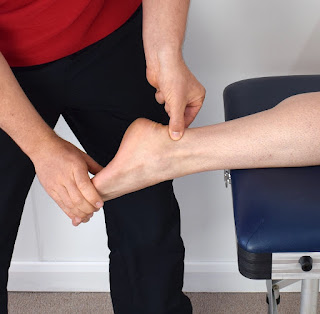In triathlon, athletes are susceptible to various injuries due to the repetitive nature of the sport and the high demands it places on the body. Some of the most common injuries in triathlon include:
Overuse Injuries: Overuse injuries result from repetitive stress on muscles, tendons, and joints. Common overuse injuries in triathlon include patellofemoral pain syndrome (runner's knee), iliotibial band (IT band) syndrome, Achilles tendinopathy, and swimmer's shoulder.
Strains and Sprains: Strains and sprains can occur in muscles, tendons, and ligaments due to sudden movements or overstretching. Common areas affected include the calf, hamstring, quadriceps, and ankle.
Biking Injuries: Cycling can lead to injuries such as lower back pain, neck pain, and knee pain. Incorrect bike fit, poor posture, and inadequate pedaling technique are common contributing factors.
Traumatic Injuries: Accidents and falls during training or racing can lead to traumatic injuries, such as fractures, dislocations, and contusions.
Dehydration and Heat-Related Injuries: In hot and humid conditions, athletes are at risk of heat-related illnesses like heat exhaustion and heatstroke due to dehydration and inadequate heat management.
To prevent injuries in triathlon, athletes can implement several strategies:
Gradual Training Progression: Athletes should gradually increase their training volume and intensity to allow the body to adapt and minimize the risk of overuse injuries.
Proper Technique and Form: Correct swim, bike, and run technique are essential for reducing the risk of injuries. Working with coaches or experienced athletes can help ensure proper form and biomechanics.
Rest and Recovery: Adequate rest and recovery between training sessions are essential for muscle repair and injury prevention. Include rest days in the training schedule and prioritize sleep.
Strength Training and Cross-Training: Incorporating strength training helps build muscle strength and stability, reducing the risk of injuries. Cross-training activities like yoga and swimming can provide variation and reduce strain on specific muscle groups....
Proper Equipment and Bike Fit: Ensuring the right equipment and bike fit is critical. A professional bike fitting can prevent biking-related injuries, while quality running shoes can reduce the risk of impact-related issues.
Hydration and Nutrition: Staying properly hydrated and fueling the body with appropriate nutrition are vital for performance and injury prevention, especially during long training sessions and races.
Listen to the Body: Paying attention to warning signs of injury, such as pain and discomfort, and seeking appropriate medical attention when needed is crucial to prevent minor issues from developing into more significant problems.
By taking a proactive approach to injury prevention, triathletes can enjoy a more sustainable and successful training experience while reducing the risk of setbacks caused by common triathlon-related injuries.
Photo: Pixabay (free)

No comments:
Post a Comment
Thanks for your comment.